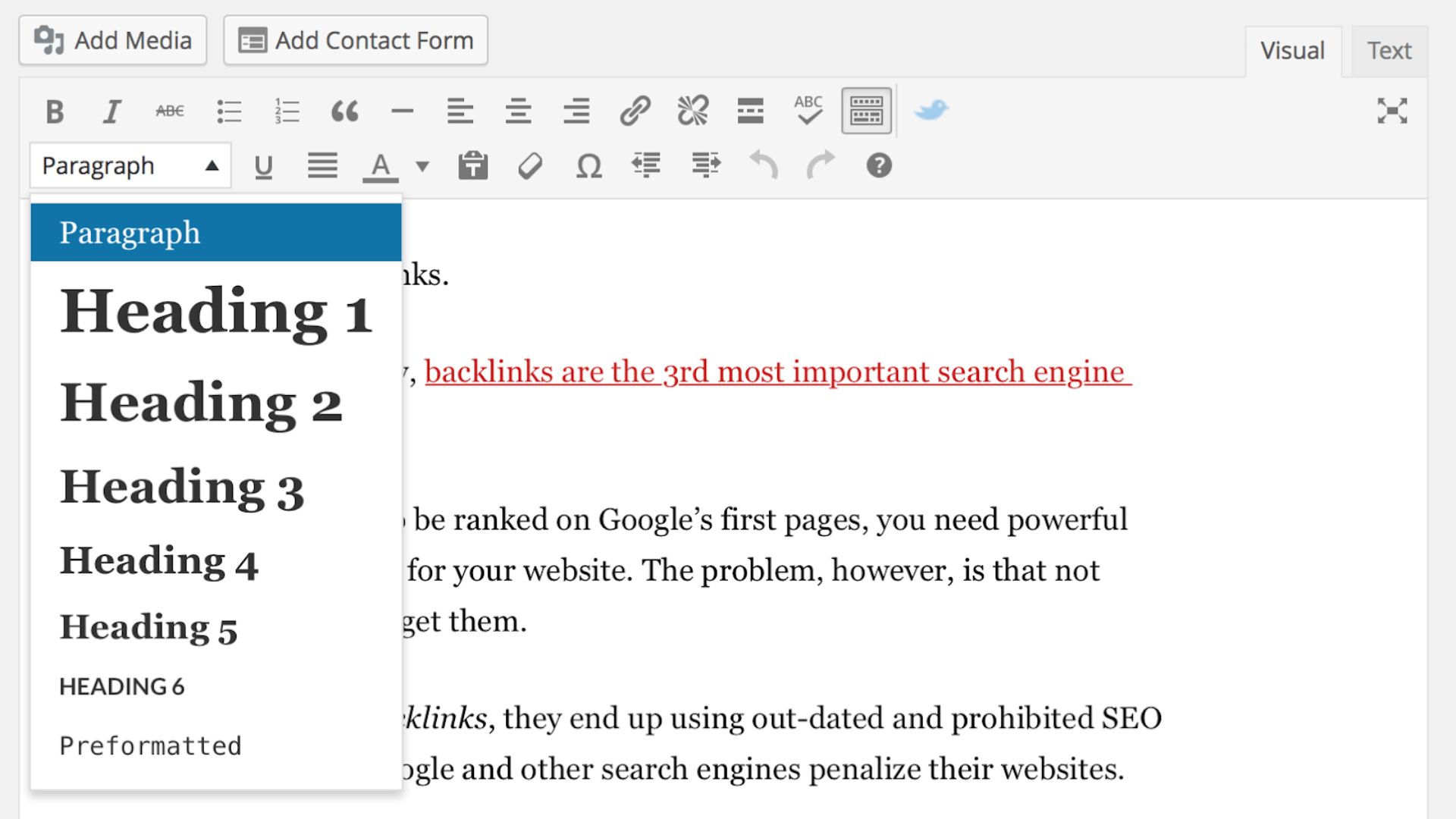
Introduction to Heading SEO Tips for Using H1 to H6 Right Way
In the realm of content creation, Heading SEO Tips for Using H1 to H6 Right Way, structure reigns supreme. While crafting captivating content is essential, users and search engines also crave a well-organized journey. Enter heading tags (H1-H6), the silent signposts that navigate your audience through the intricate web of your content. Optimizing these tags unlocks a treasure trove of SEO benefits and paves the way for an exceptional user experience.
This comprehensive guide delves into the strategic application of heading tags, empowering you to craft a website that effectively communicates with both search algorithms and your valued visitors.
Demystifying Heading Tags: Structure and Significance
The Hierarchy of Information:
Heading tags function in a well-defined hierarchy, mirroring the structure of a newspaper. Heading SEO Tips for Using H1 to H6 Right Way, H1 serves as the most prominent heading, akin to a headline, followed by H2 subheadings, and so forth. This hierarchy establishes a clear understanding of the content’s organization.
Content Chunking:
Heading tags visually compartmentalize your content, transforming lengthy passages into easily digestible sections. This reader-friendly approach makes it a breeze for users to scan the page, grasp vital concepts, and locate information relevant to their needs.
SEO Signal for Search Engines:
Search engines meticulously examine heading tags to glean the essence and structure of your content. This analysis plays a crucial role in determining your website’s ranking within search results.

Optimizing H1 Tags: The Cornerstone of Your Content
Uniquely Yours:
Each webpage deserves a distinct H1 tag, serving as the primary title and encapsulating the core theme of the content.
Keyword Integration:
While incorporating your target keyword is essential, prioritize user-friendliness over keyword stuffing. Ensure the H1 tag reads naturally and accurately reflects the content’s value proposition.
Conciseness is Key:
Aim for an H1 tag length between 50-60 characters. This ensures optimal impact on both users and search engines.
Aligning with Title Tag:
Maintain consistency between your H1 tag and the webpage’s title tag. This cohesion strengthens SEO signals sent to search engines.
H2 Tags: Carving Your Content Landscape
H2s Breathe Life into H1s:
H2 tags subdivide the content encompassed by your H1 into manageable sections, offering a deeper dive into specific aspects of the broader topic.
Targeted Keyword Strategy:
Strategically incorporate relevant keywords within your H2s. Heading SEO Tips for Using H1 to H6 Right Way, This practice enhances the topical relevance of each section and strengthens SEO signals.
Clarity and Concision Reign Supreme:
H2 tags should precisely reflect the content they introduce while maintaining conciseness.
H3 Tags and Beyond: Granular Content Segmentation
H3s for Meticulous Organization:
If your H2 sections necessitate further breakdown, H3 tags come into play. They are ideal for introducing subsections within each H2.
H4-H6 for Deep Dives:
While sparingly used, H4-H6 tags cater to highly intricate content structures.
Maintaining Hierarchy:
Heading SEO Tips for Using H1 to H6 Right Way, Always adhere to the established H1 -> H2 -> H3 -> H4 -> H5 -> H6 order. Avoid jumping between heading levels, as this disrupts the logical flow of your content.
Pro-Tips for SEO-Friendly Heading Tags
Readability Always Wins:
User experience should be your top priority. Prioritize clear, naturally flowing language within your headings, and resist the urge to keyword stuff.
Content Drives Structure:
Heading SEO Tips for Using H1 to H6 Right Way, Don’t succumb to the temptation of overusing heading tags. Ensure your content justifies the number of headings you employ.
Schema Markup Magic:
Leverage schema markup to provide search engines with an extra layer of context regarding your content’s structure and organization.
Reap the Rewards of Strategic Heading Tag Implementation
Enhanced User Experience:
Heading SEO Tips for Using H1 to H6 Right Way, Well-structured content with clear headings fosters a user-friendly experience, keeping visitors engaged and allowing them to find the information they seek effortlessly.
Search Engine Relevance:
Search algorithms leverage heading tags to comprehend your content’s organization and thematic relevance, potentially propelling your website up the search rankings.
Building a Strong Foundation:
A logical hierarchy established through strategic use of heading tags lays the groundwork for a website that is not only informative but also search-engine friendly.
Conclusion
In Conclusion Heading SEO Tips for Using H1 to H6 Right Way, Heading tags transcend their role as mere formatting tools. They metamorphose into strategic components that significantly influence user experience and SEO. By grasping their significance and adhering to the optimization practices outlined above, you empower your website to resonate with both users and search engines. Remember, well-organized content is not just informative, it’s discoverable.
Feel Free to Connect With Us on. Facebook, Instagram, LinkedIn, Twitter & YouTube for more learnings and updates. And Read More of Our Blogs About AI, Digital Marketing and More… Check Out Personalised Trainings by Clicking the_sunil_jangir Here





